Introduction
Recently, Apple’s new Mac mini M4 has surprisingly offered 16GB of RAM, coinciding with national subsidies and the Double 11 shopping festival, making it an attractive option for many at under 3500 yuan. Many users who have received their units have started various external “hacks”.
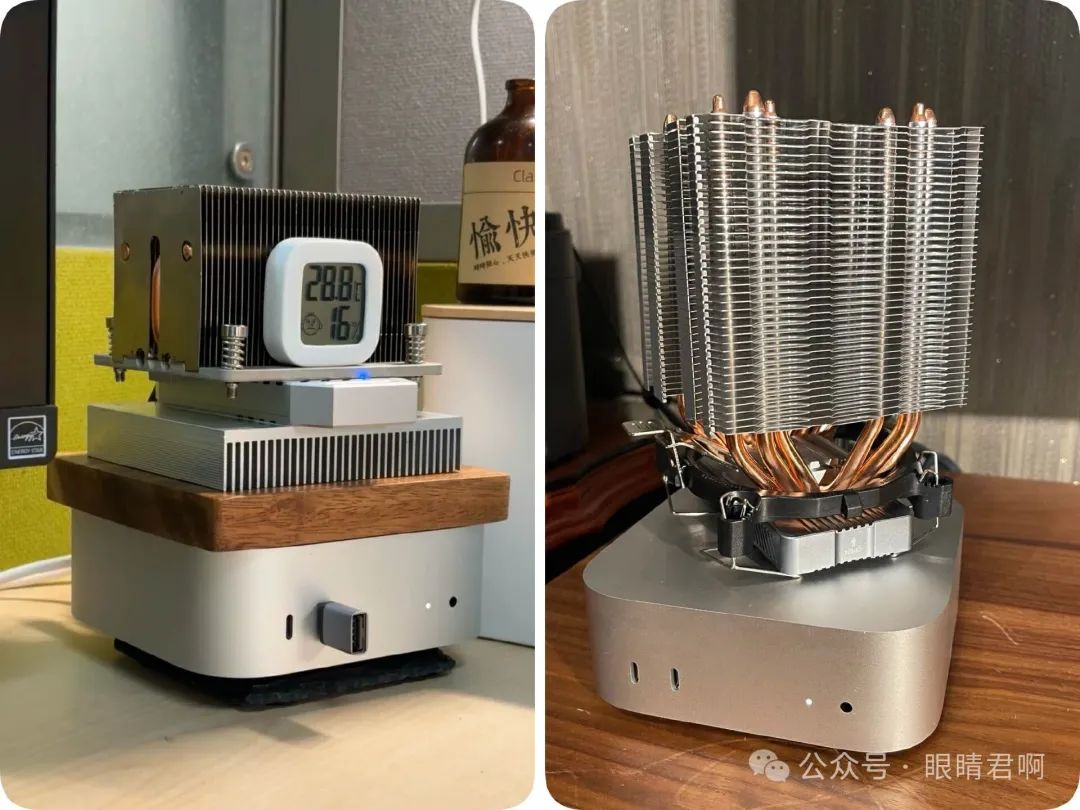
Interface anxiety, capacity anxiety, and even power button anxiety; I really admire the creativity of netizens.
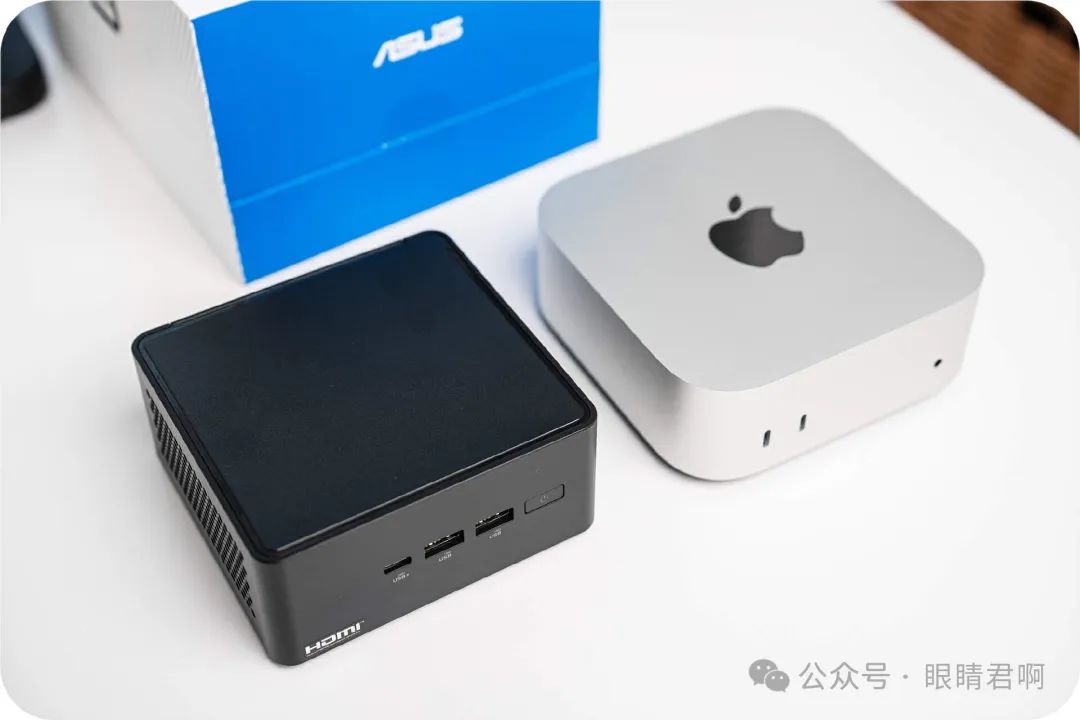
As a digital player who uses both a NUC mini PC and a Mac mini, I want to say to ordinary users, especially those who have always used Windows PCs: the new Mac mini looks cheap, but it may not be suitable for you. The differences in system interaction and software ecosystem between Mac and traditional Windows PCs can easily reduce the Mac mini to a toy that collects dust after the novelty wears off. Just check second-hand markets to see how many people have tried and given up on their used Mac minis.
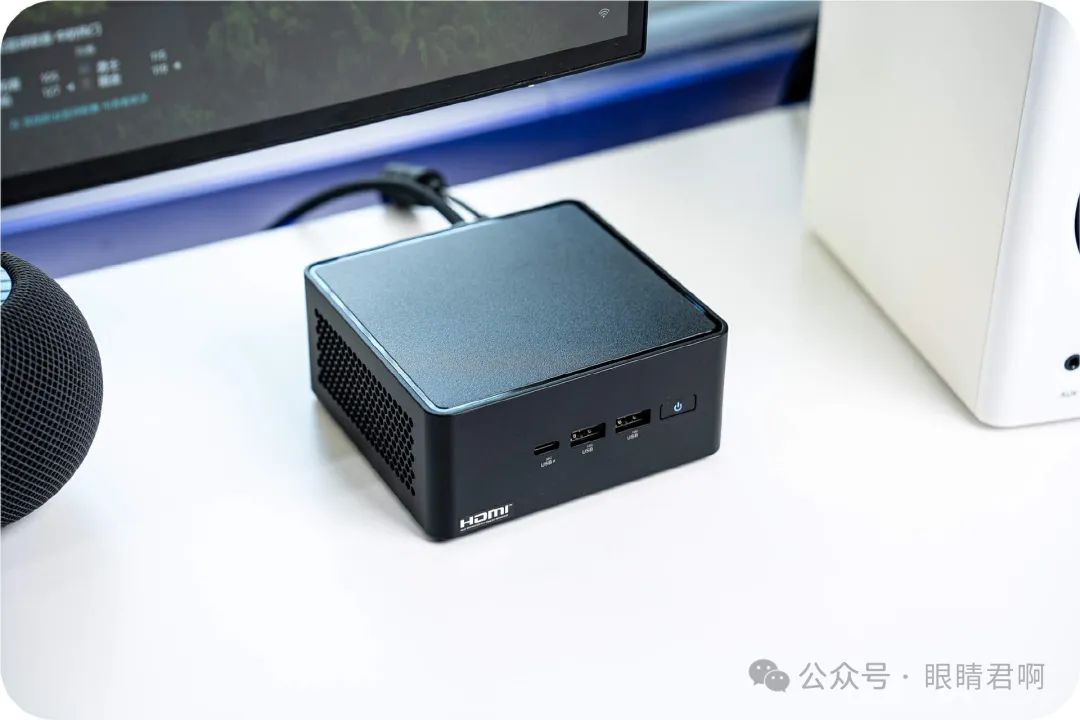
For most users, when considering a mini PC, I recommend Wintel products, which is the combination of Windows and Intel. For example, the classic NUC series mini PCs. Today, I will share my experience with the Asus NUC 14 Pro mini PC while discussing the differences between NUC and Mac mini.Simple Unboxing
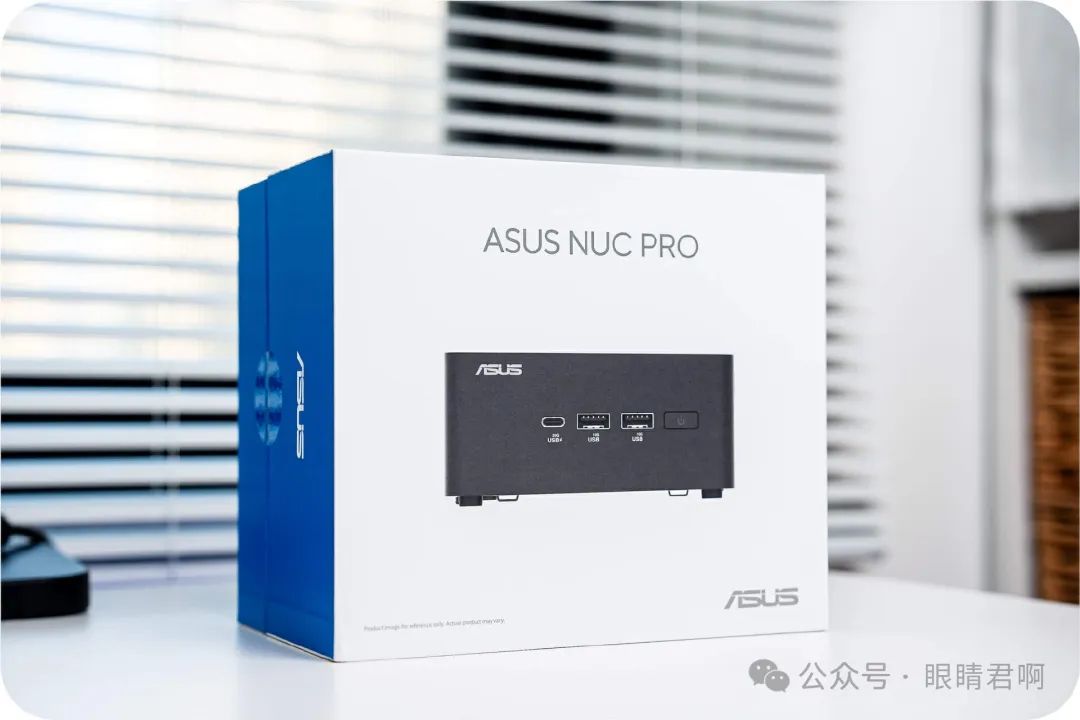
The new generation Asus NUC’s packaging design is very simple, with a pure white background featuring a close-up of the NUC PRO on the front.
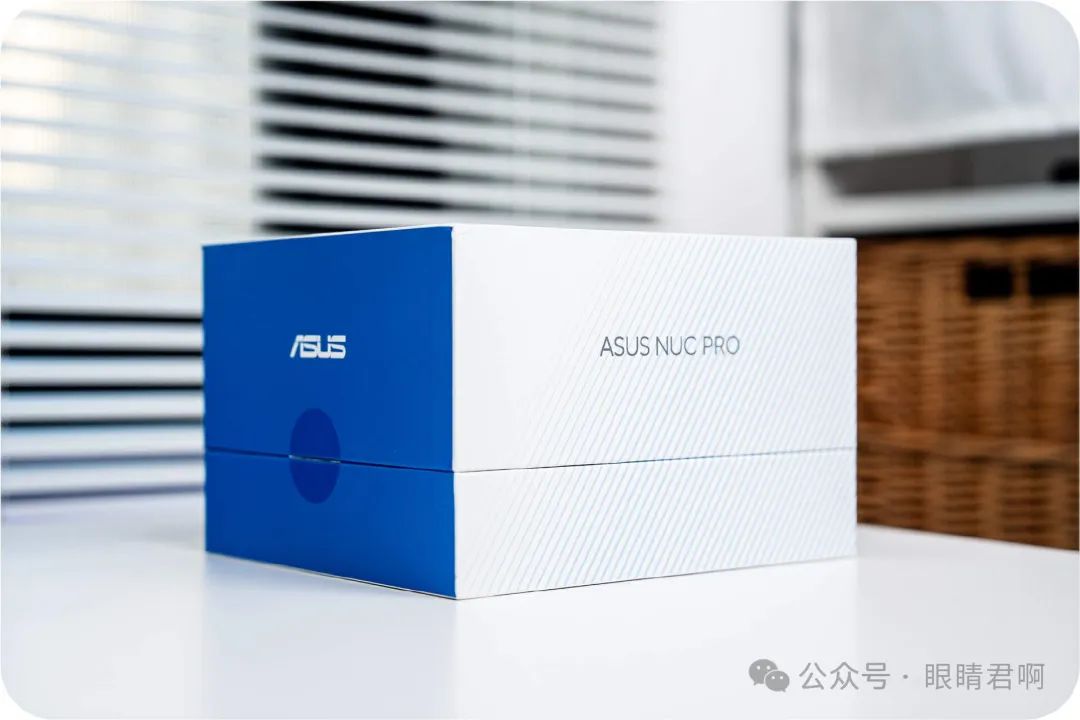
The side retains Intel’s blue, continuing the classic NUC brand identity.
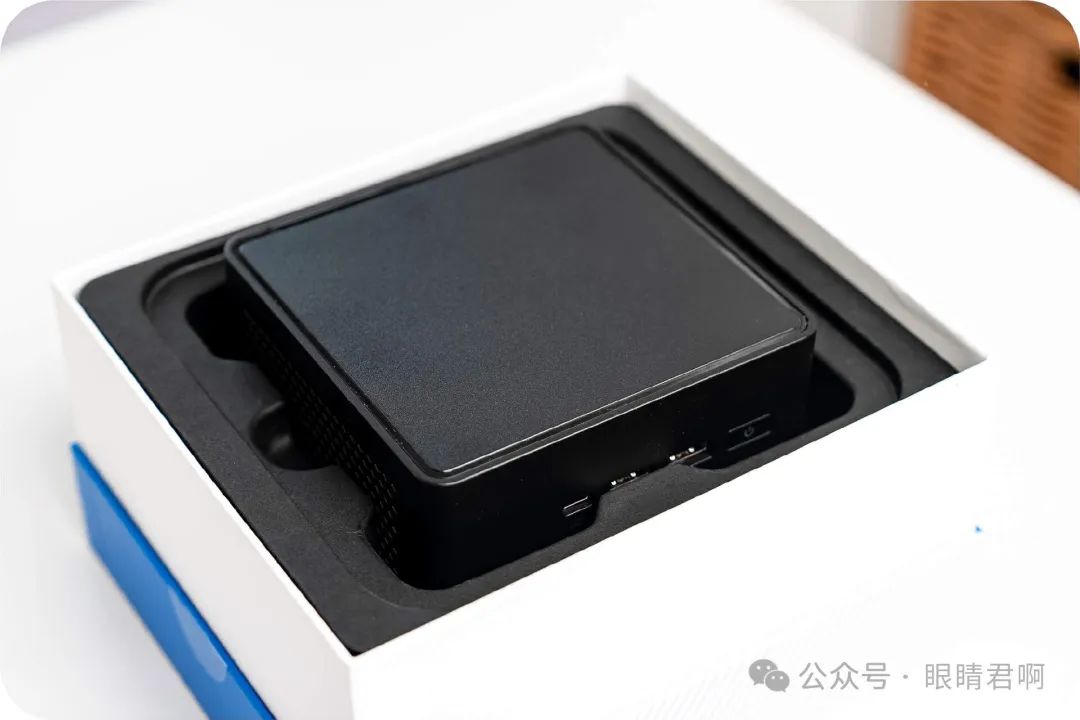
Upon opening the box, you can see that the NUC 14 PRO is significantly smaller than the packaging, making it very compact.
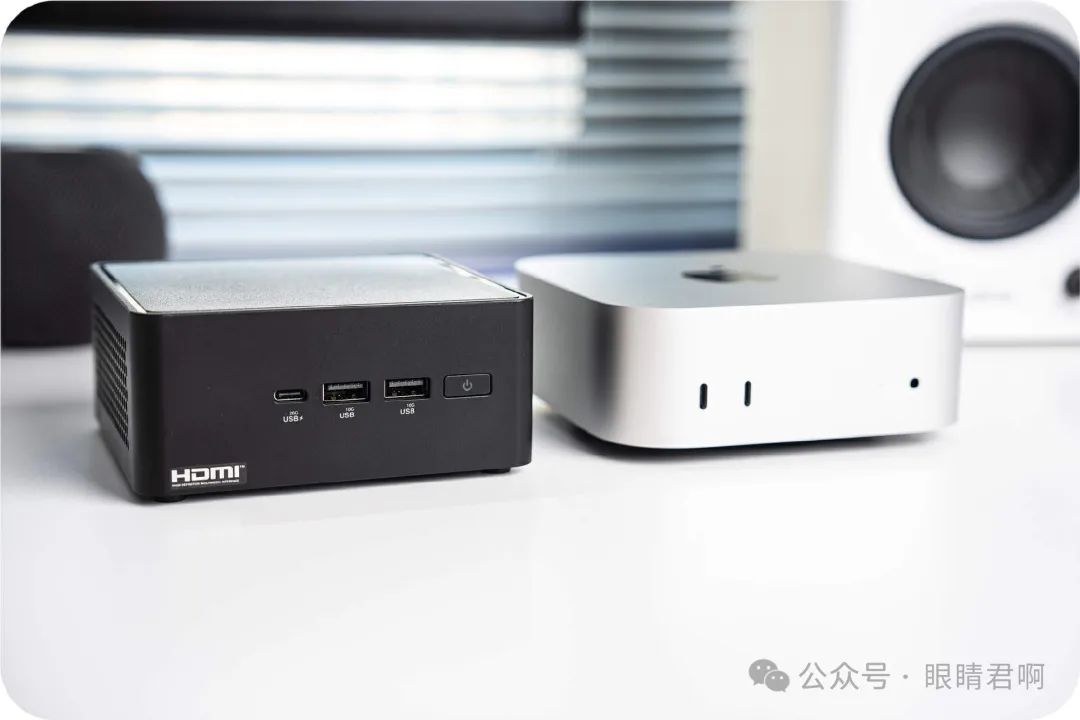
The dimensions of the main unit are 117mm x 112mm x 54mm, which is also smaller than the new Mac mini, showcasing excellent size control.
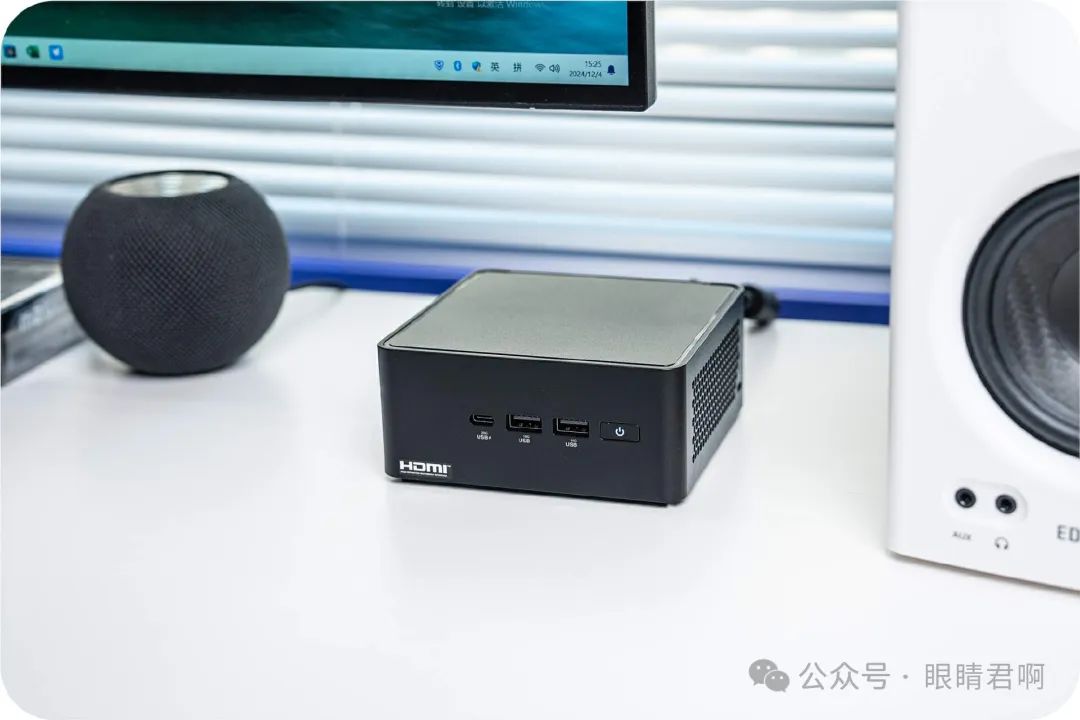
In terms of appearance, the Asus NUC 14 PRO follows the traditional design language of NUC more closely, appearing rounder compared to Asus’s own PN series mini PCs. The pure black body gives it a very business-like appearance, contrasting sharply with the Mac mini’s style.
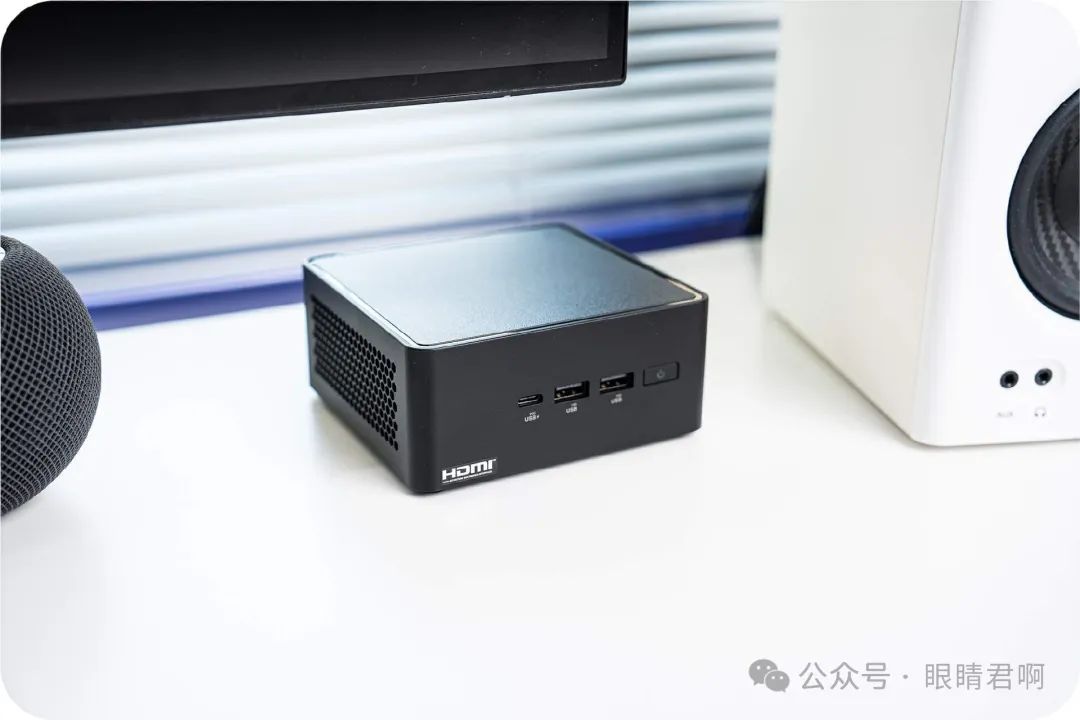
I purchased a system with the Ultra 7 configuration, so the front of the unit does not have the ASUS logo.
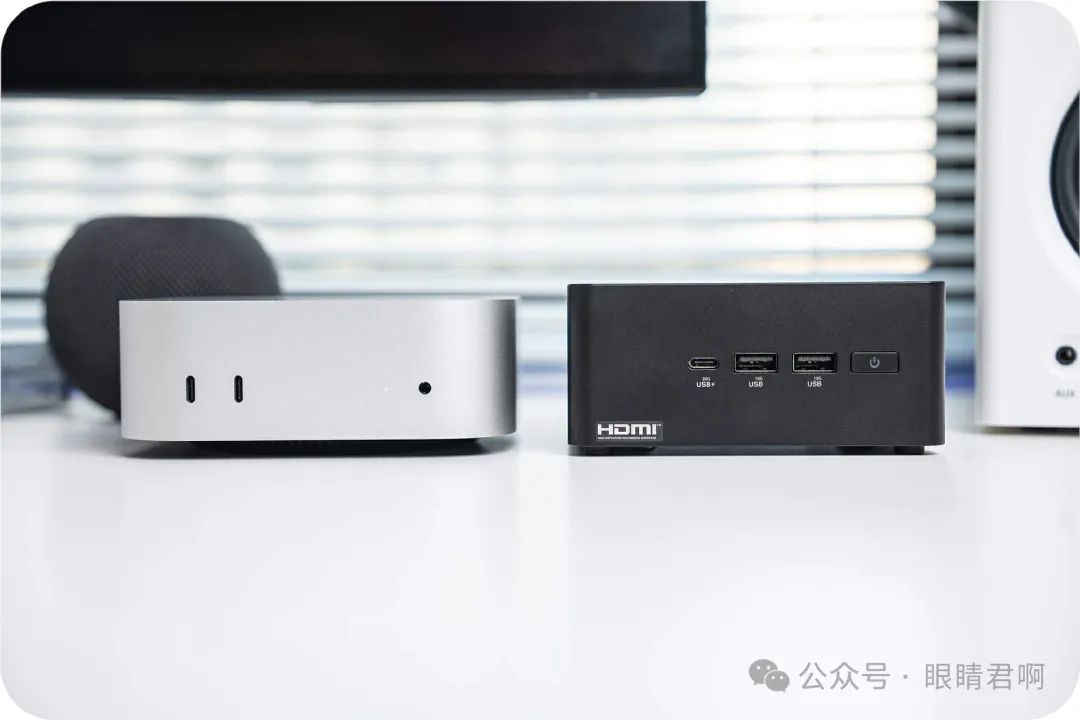
In terms of external interface configuration, the front features a 20Gbps USB-C port and two 10Gbps USB-A ports. In comparison, the Mac mini only has two USB-C ports on the front, making the NUC’s configuration clearly more practical.
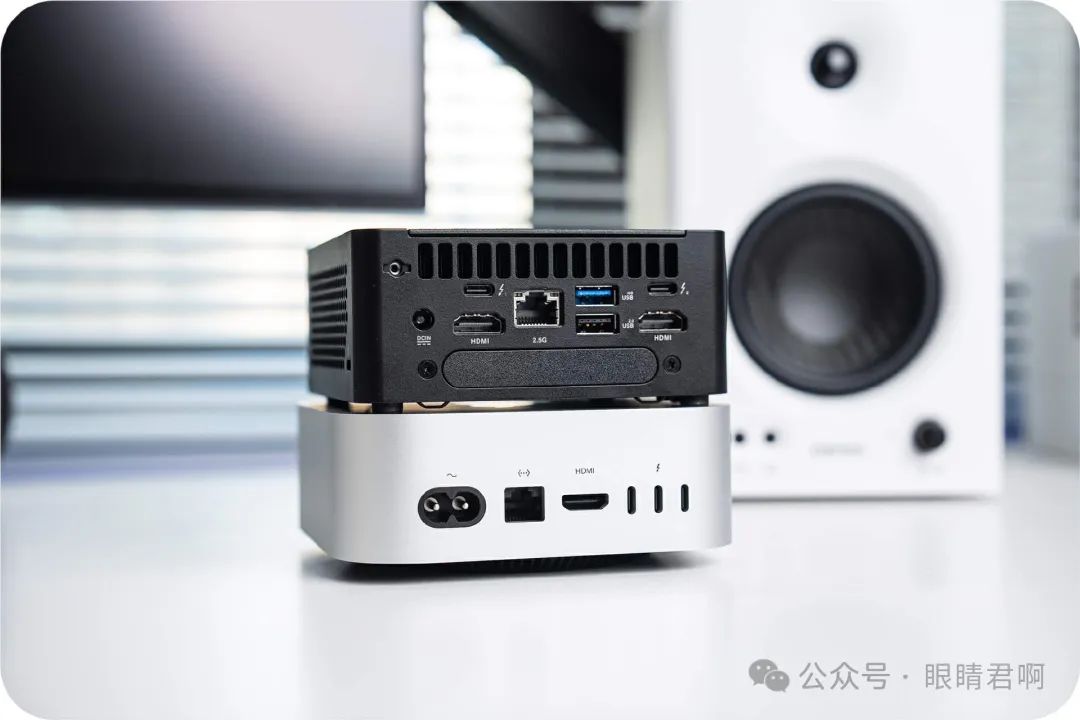
The rear interface of the unit includes dual HDMI 2.1 ports, dual Thunderbolt 4 ports, a 10Gbps USB-A port, and a USB 2.0 A port, with a single 2.5Gbps network interface. Additionally, the bottom has reserved expansion slots for interface expansion through dedicated accessories.
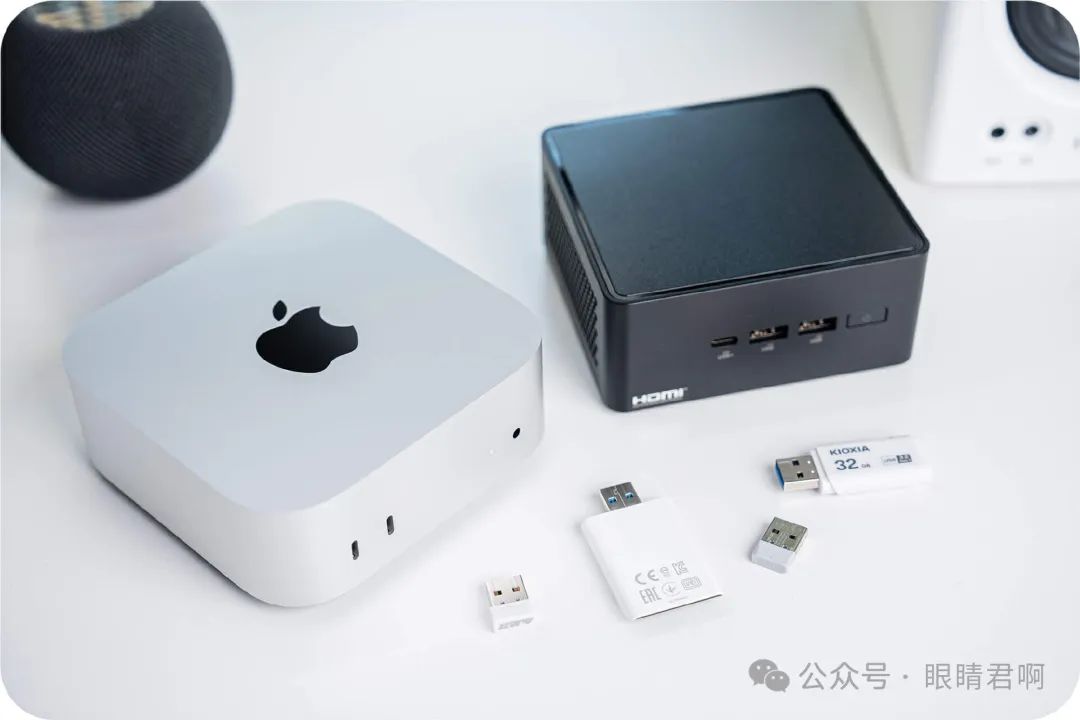
In terms of interface configuration, the NUC 14 PRO does not appear as aggressive as the Mac mini with all Thunderbolt 4 ports; the quantity and variety are richer, at least for me, connecting an external USB-A SD card reader does not require a docking station. For most users still using USB-A flash drives, the NUC’s interface configuration is more practical.
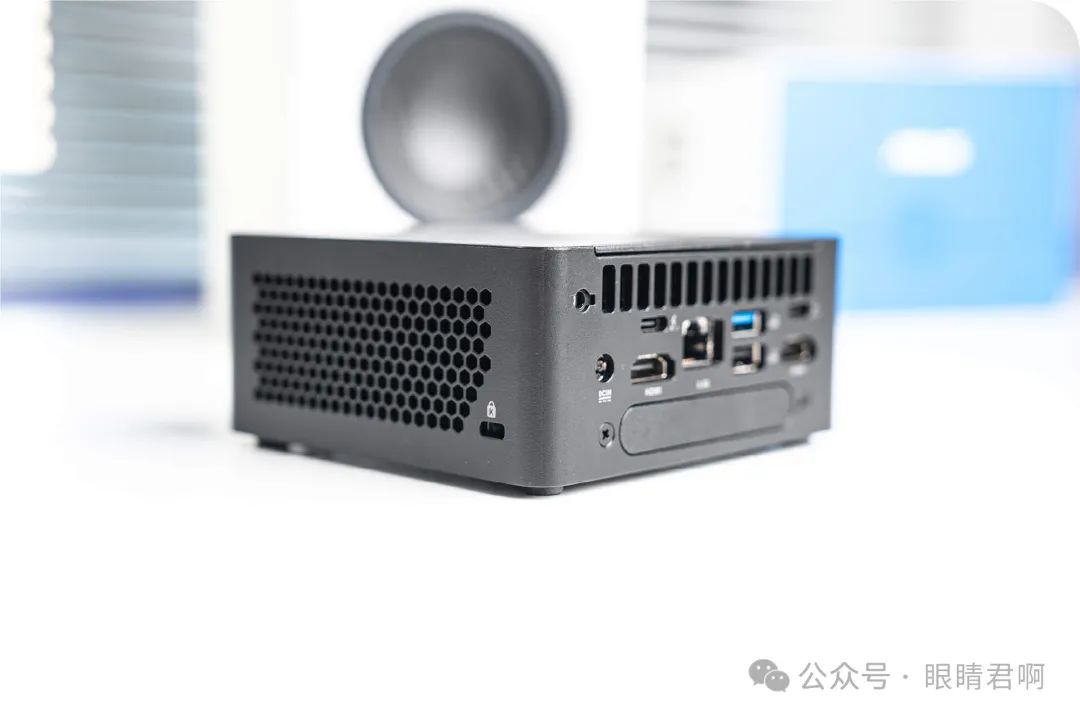
The heat dissipation design of the unit is similar to that of the previous NUC11, with large ventilation grilles on both sides for air intake and exhaust at the rear. This generation of NUC 14 PRO adopts a new heat dissipation module, with upgraded fan size and cooling architecture, and dual copper heat pipes directly touching the CPU, providing excellent performance in both noise level and heat dissipation.
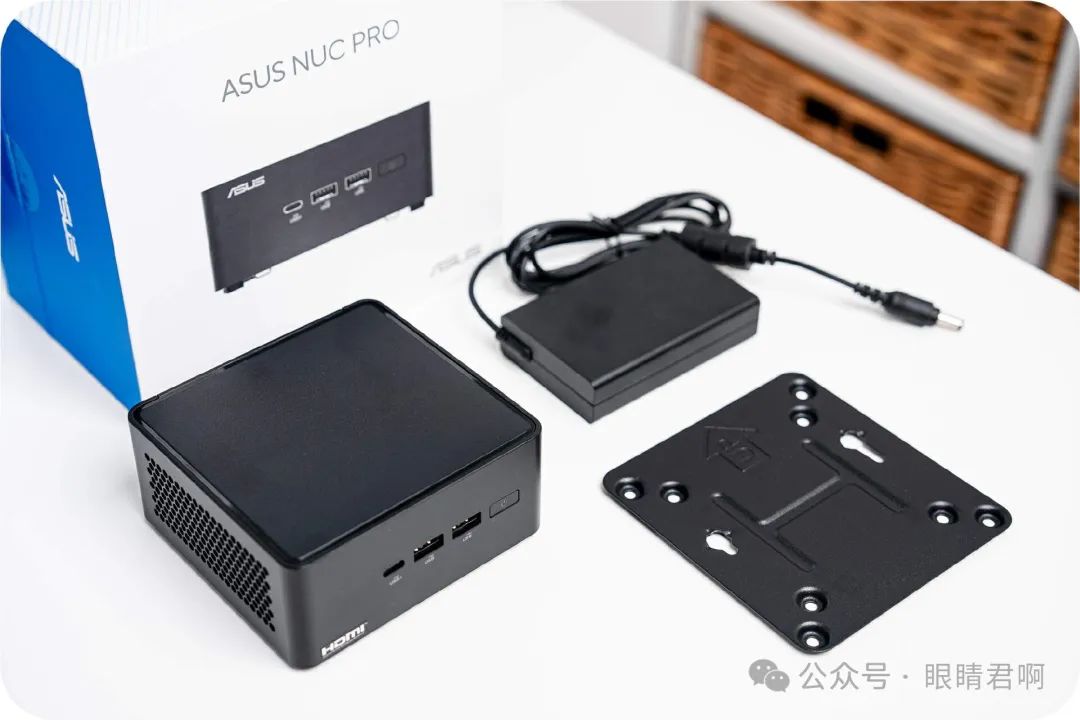
The accessories include a standard VESA mount that supports mounting the NUC 14 PRO on the back of a monitor. Compared to the built-in power supply design of the Mac mini, the NUC 14 PRO still retains an AC to DC power adapter.
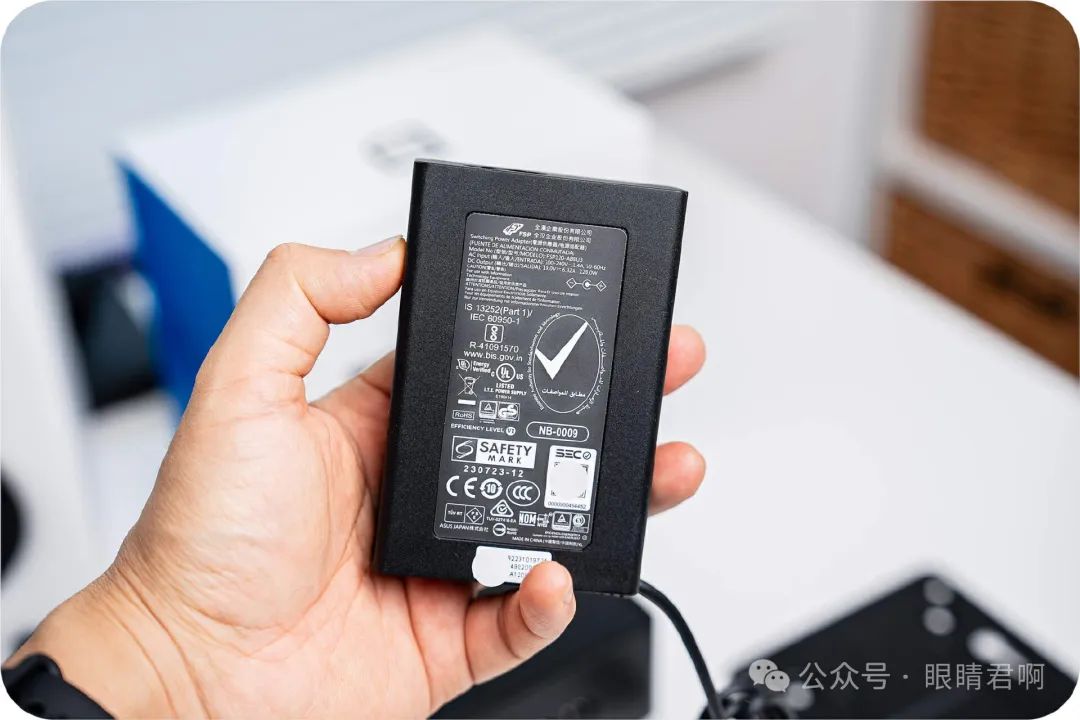
The new 120W GaN adapter is significantly smaller and lighter compared to the previous NUC 11 adapter, greatly enhancing portability (the best aspect of mini PCs is saving desk space; portability is actually a false demand).
Easy to Expand
Compared to the fully closed hardware and software of the Mac mini, a major advantage of the NUC is its expandability, which is evident not only in external interfaces but also in memory and storage configurations. This has always been one of the features of NUC providing barebone systems for consumers.
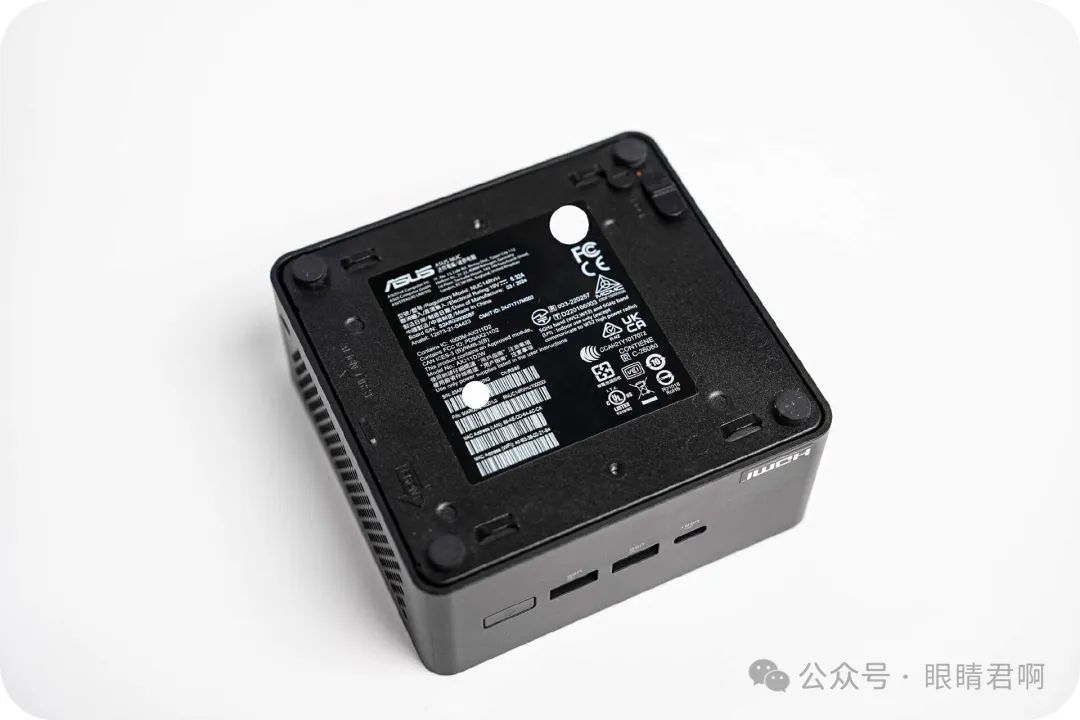
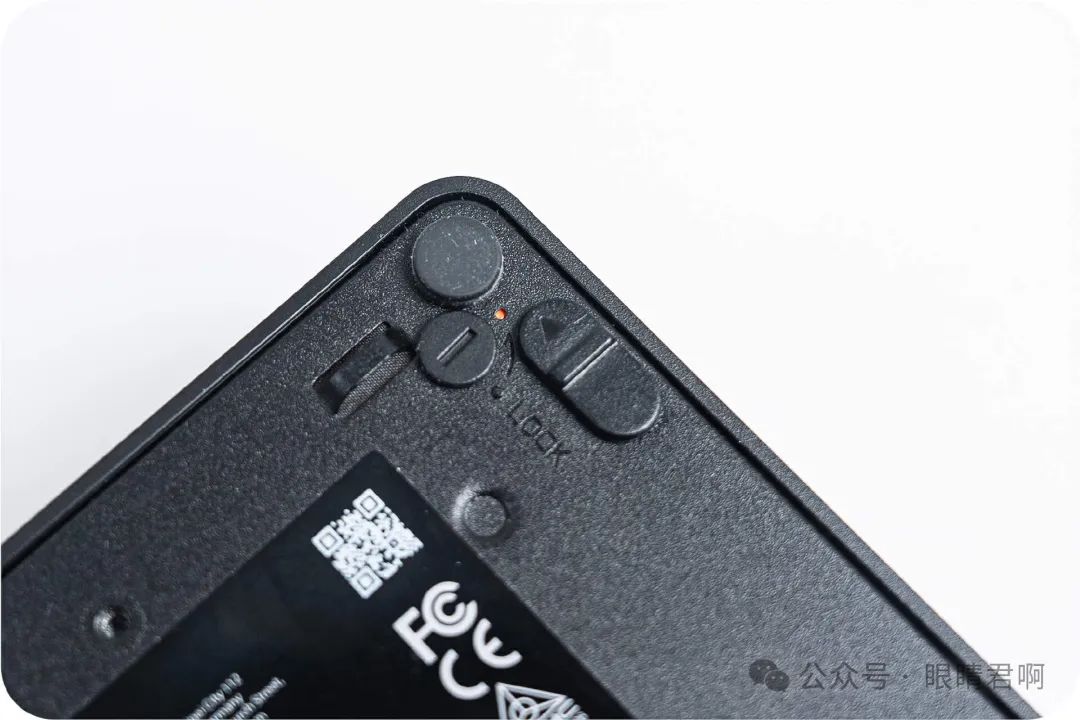
This characteristic is well reflected in the design of the NUC 14 PRO’s chassis, where the bottom cover employs a tool-free quick-release design. By rotating the circular pin to the open position and pressing the spring lock nearby, the bottom cover can be easily removed, allowing users to install memory and storage components conveniently.
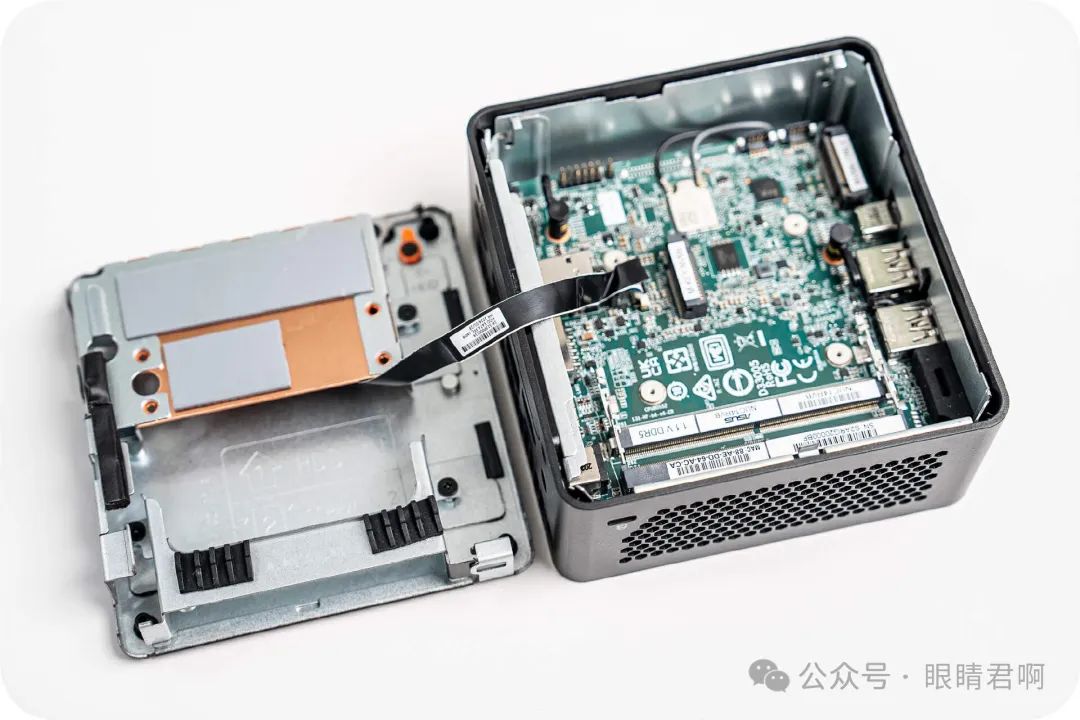
Upon opening the bottom cover, it can be seen that it supports the installation of a 2.5-inch hard drive, connected to the motherboard via a ribbon cable, requiring caution during disassembly. Additionally, the copper metal piece on the bottom cover is attached with thermal paste, properly aligned to dissipate heat from the M.2 SSD on the motherboard.
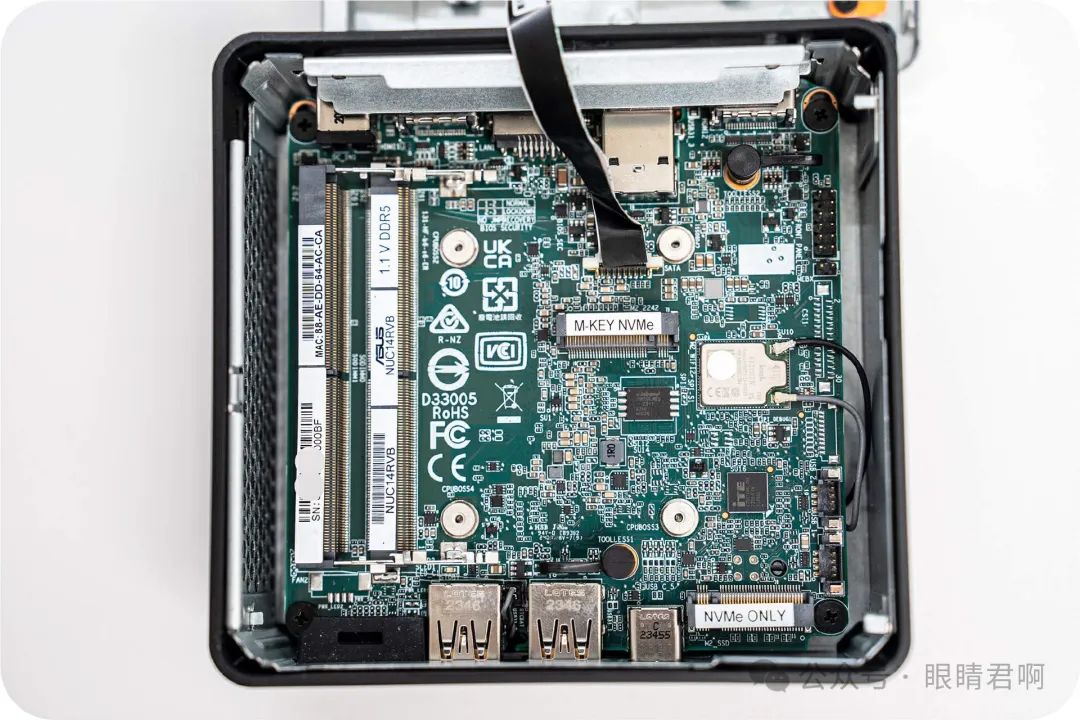
The motherboard layout is basically consistent with the previously used NUC 11, featuring two laptop memory slots on the left side, supporting a maximum of 48GB x 2 DDR5 5600MHz memory, while the right side provides an M-key NVMe 2242 SSD slot and a 2280 NVMe SSD slot, both supporting PCIe 4.0 protocol.
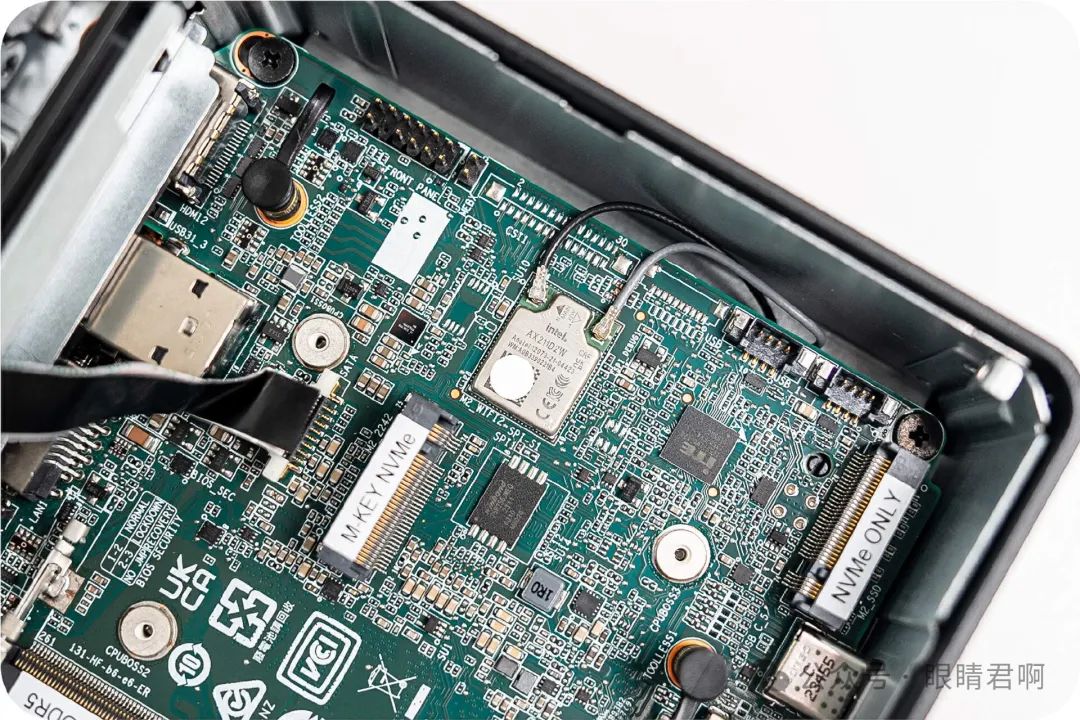
The onboard Intel AX211 wireless card supports WiFi 6E and Bluetooth 5.3, which is a practical configuration, although it does not include the latest WiFi 7.
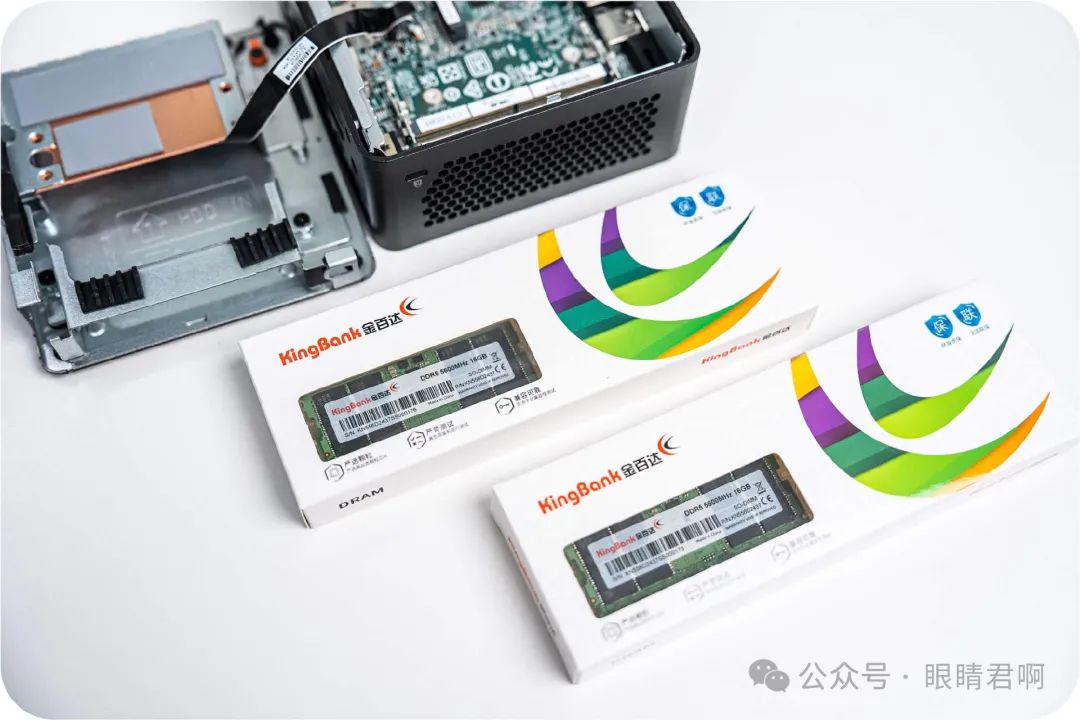
I prepared 16GB x 2 memory for this barebone system, choosing the Jinbaida DDR5 5600MHz laptop memory, which uses Samsung original chips, offering excellent stability and compatibility, while also being reasonably priced.
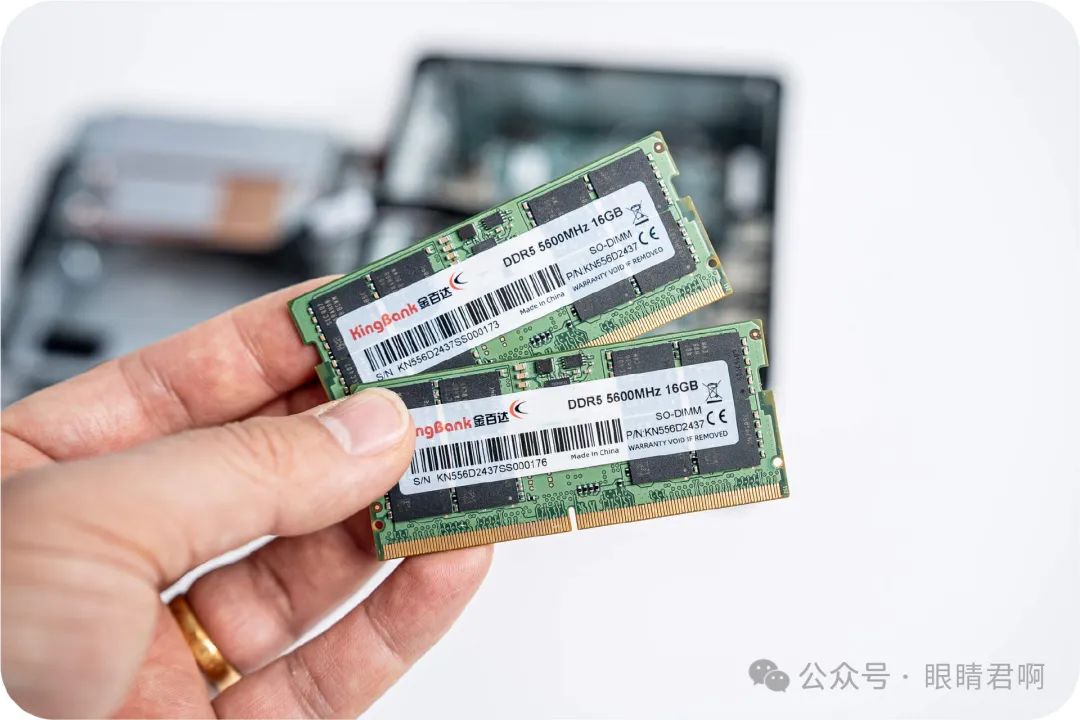
With 32GB in dual-channel configuration, the capacity is sufficient, and the dual-channel speed is faster than a single stick of memory. The NUC 14 PRO supports a maximum of 96GB of memory, and you can upgrade it anytime, which offers not only freedom in upgrading compared to the Mac mini’s memory configuration but also a cost-effective option. The price difference between the 16GB and 24GB versions of the Mac mini is around 1500 yuan.
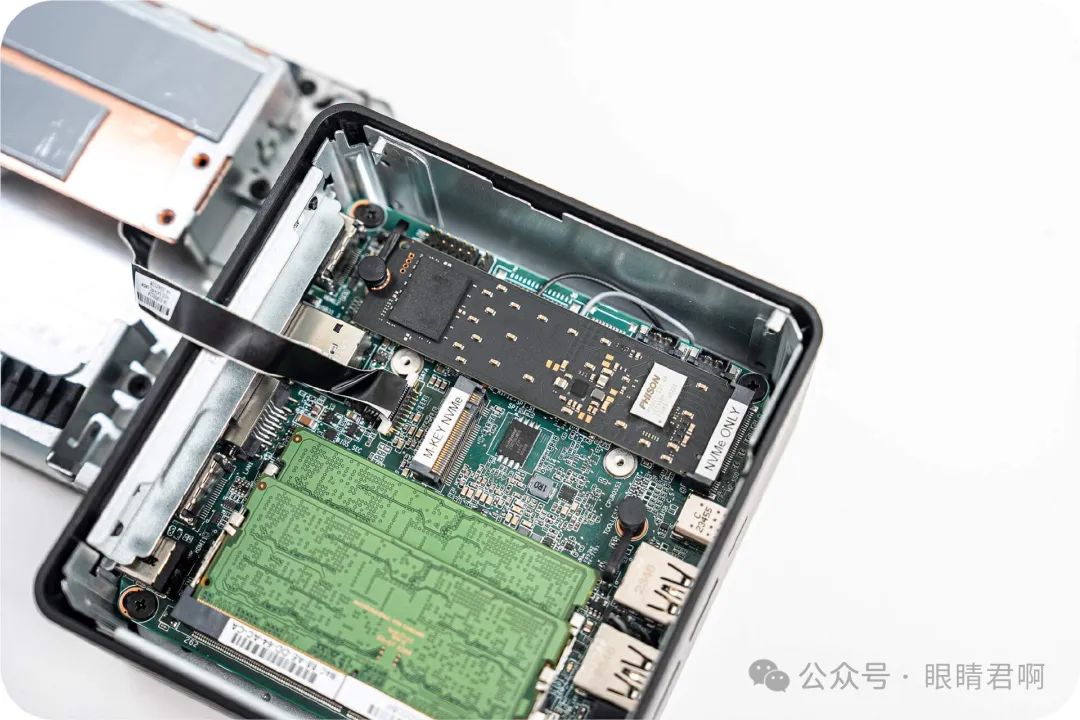
For storage, I am using a 1TB INNODISK P3 PLUS NVMe SSD that I had lying around, which offers significantly more storage than the base Mac mini’s 256GB capacity. Additionally, there is a 2242 SSD slot and a 2.5-inch hard drive slot, eliminating any storage anxiety.
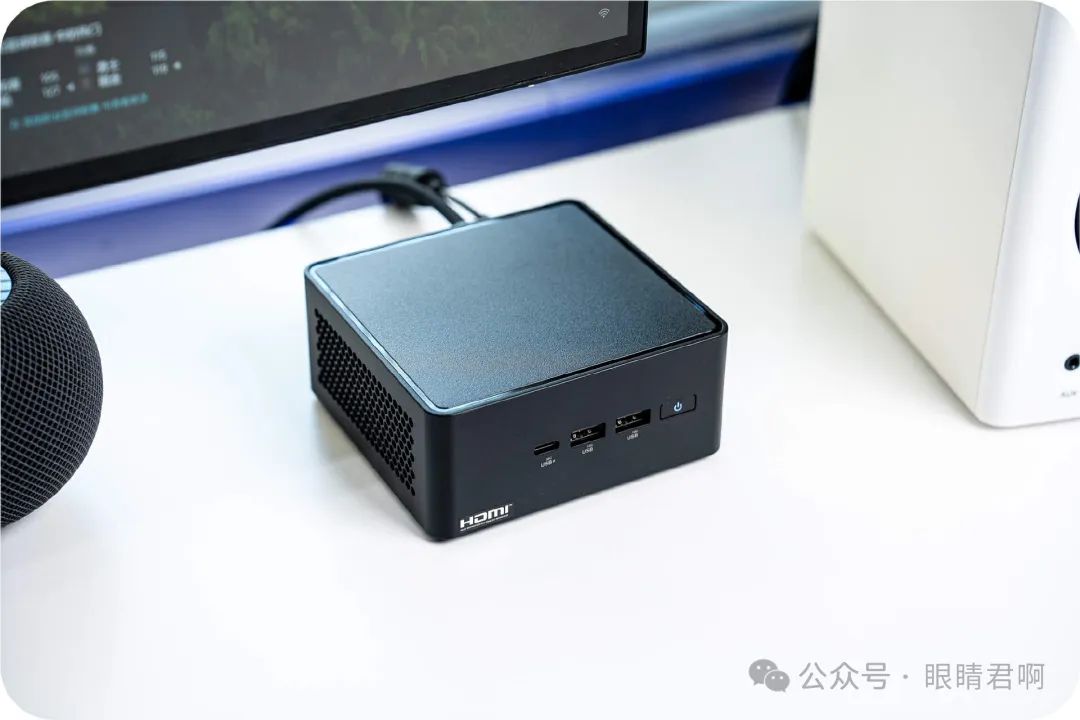
This results in a mini PC with 32GB of memory and 2TB of storage, powered by Intel’s latest Ultra 7 155H processor. Although the price of the NUC barebone system is higher than the base Mac mini, the overall cost is much lower when compared to a similarly configured Mac mini, which costs 10499 yuan for the 32GB memory and 1TB storage version….
Exceptional Performance
While the new Mac mini powered by the Apple M4 chip boasts impressive performance, the limitations of macOS and the ARM architecture restrict its application versatility. In contrast, the NUC 14 PRO’s openness allows users to operate on Windows for work or gaming, or develop on the Linux platform, offering a broader range of applications. Let’s take a look at the performance of this Ultra 7 version of the NUC 14 PRO.
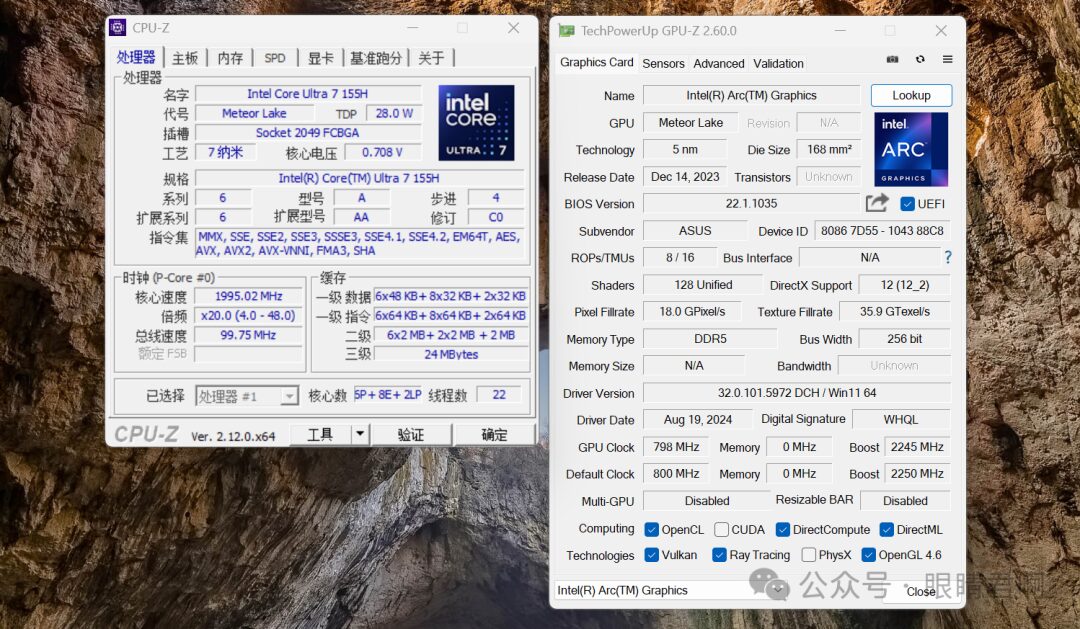
CPU-Z and GPU-Z information show that the Intel Ultra 7 155H processor features 6 performance cores, 8 efficiency cores, and 2 LP efficiency cores, totaling 16 cores and 22 threads, with a maximum boost frequency of 4.8GHz. The integrated graphics of the new Intel Ultra series processors has seen a significant improvement, with the integrated Arc graphics being able to compete directly with AMD’s top graphics, the Radeon 780M, while the addition of a dedicated NPU greatly enhances local AI performance.
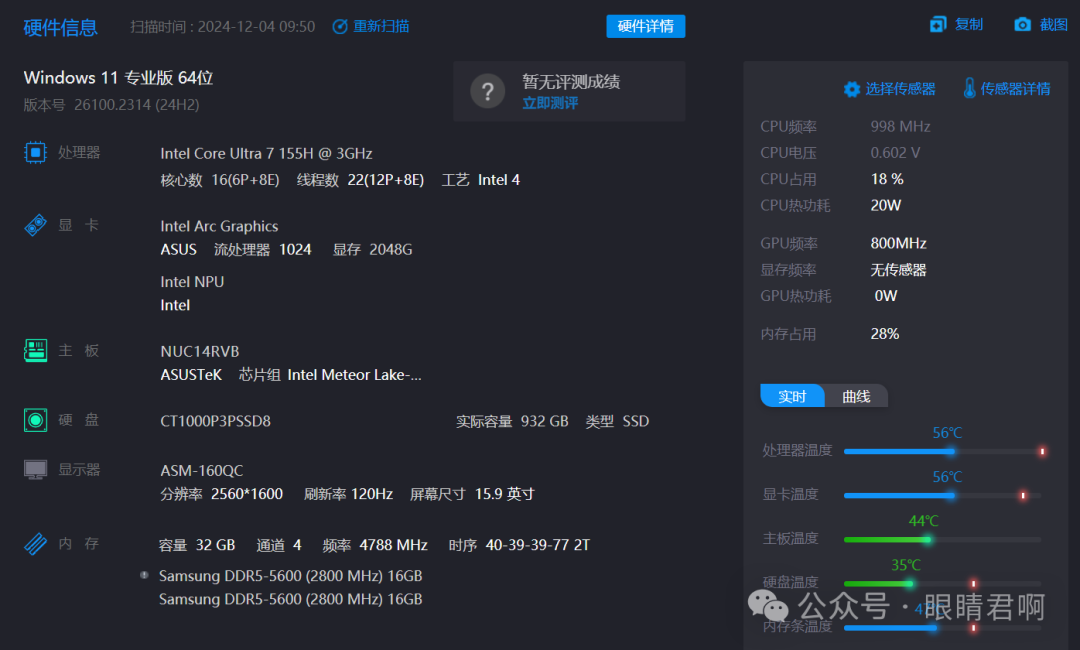
Hardware parameter screenshots confirm that 32GB of memory and 1TB of storage are correctly recognized.
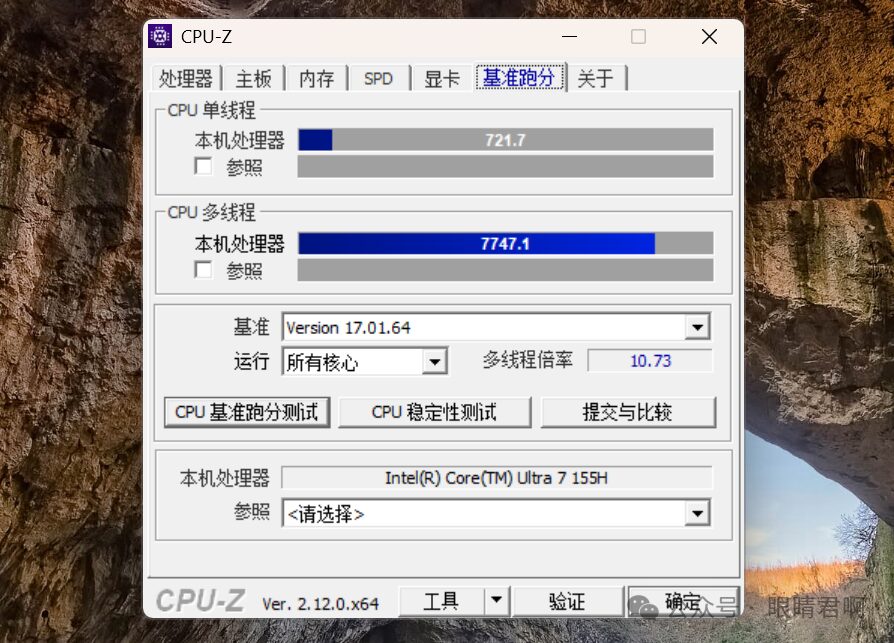
In terms of theoretical performance, CPU-Z scores are shown, with a single-core score of 721.7 and a multi-core score of 7747.1.
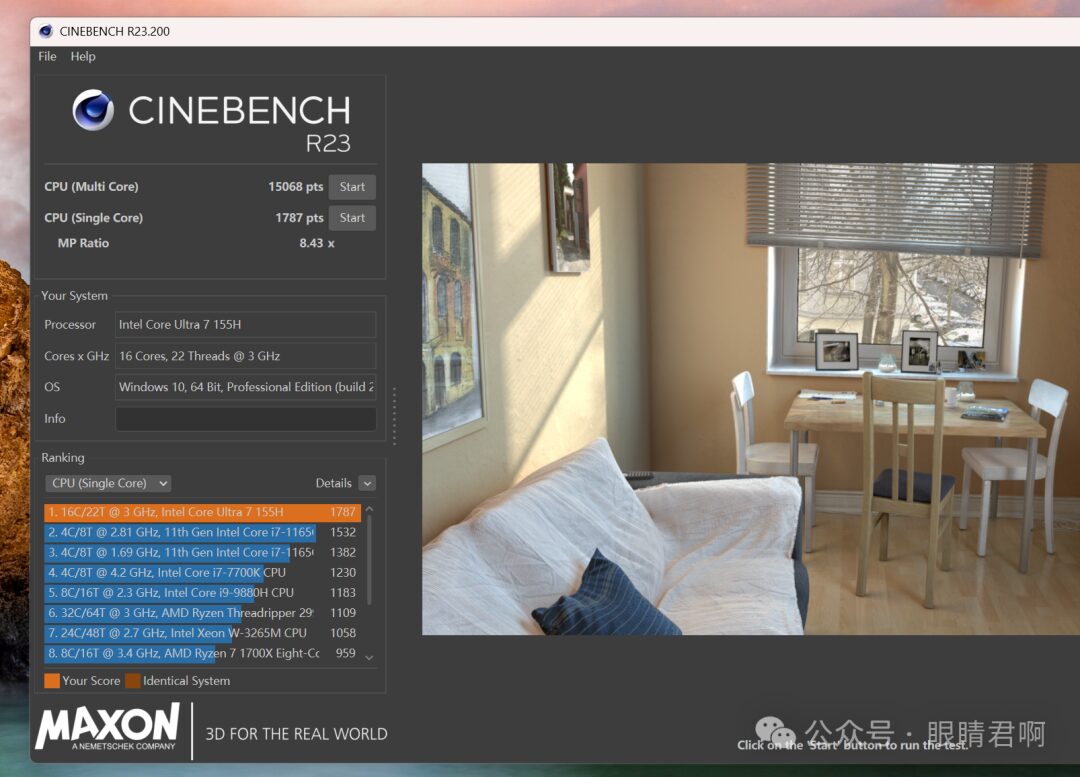
CINEBENCH R23 scores reflecting CPU performance show a single-core score of 1787 and a multi-core score of 15068.
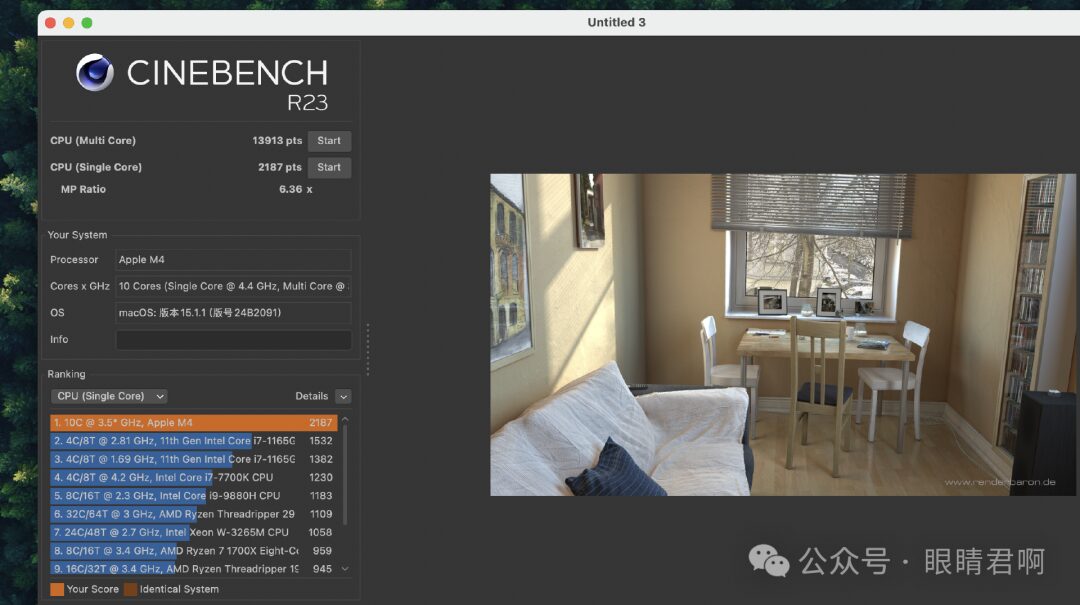
Here we can also see the performance scores of the Mac mini M4, where the multi-core score of 13913 is lower than the NUC 14 PRO’s Ultra 7 155H, but the single-core score of 2187 is stronger. The CPU performance of the two mini PCs shows a competitive edge for each.
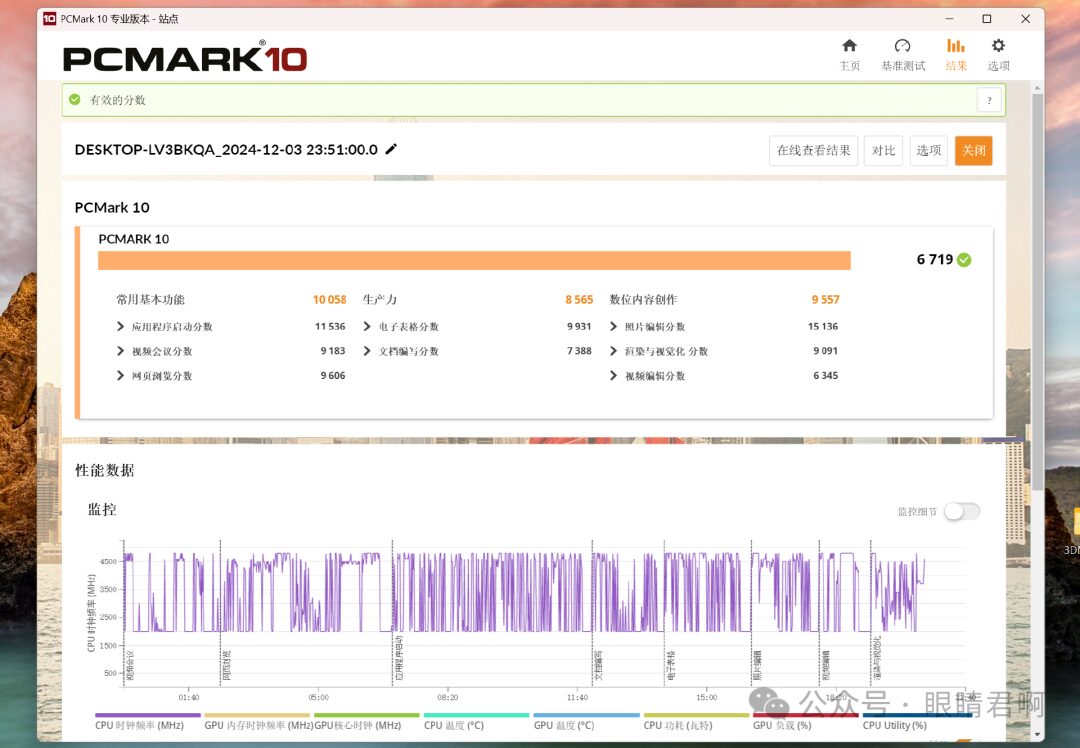
In terms of office and productivity performance, I used PC Mark for testing, where the Asus NUC 14 PRO scored a total of 6719, with a productivity score of 8565 and a digital content creation score of 9557.
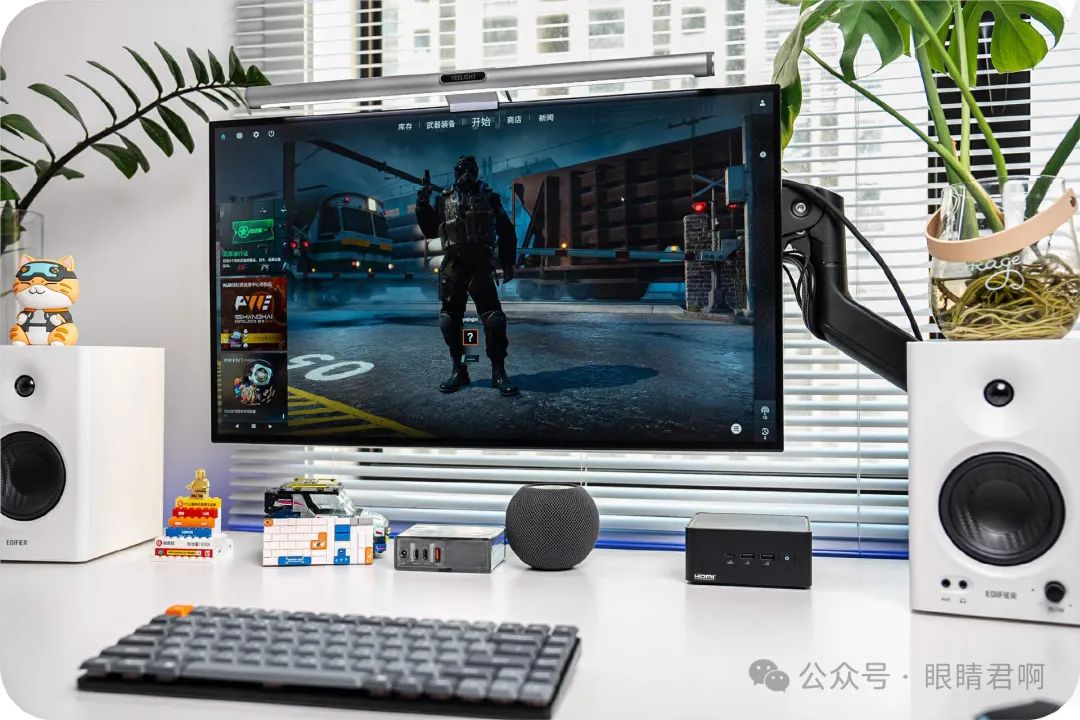
For ordinary office applications, the performance of the Asus NUC 14 PRO is completely adequate. I previously mentioned the excellent integrated graphics performance of the Intel Ultra 7 155H processor, which features the integrated Intel Iris Xe-LPG architecture with 8 Xe Cores and 128 EU units, with a maximum boost frequency of 2.25GHz, nearly doubling the graphics performance compared to the previous generation Intel Xe architecture. Now let’s take a look at the gaming performance of the Asus NUC 14 PRO with its powerful integrated graphics.
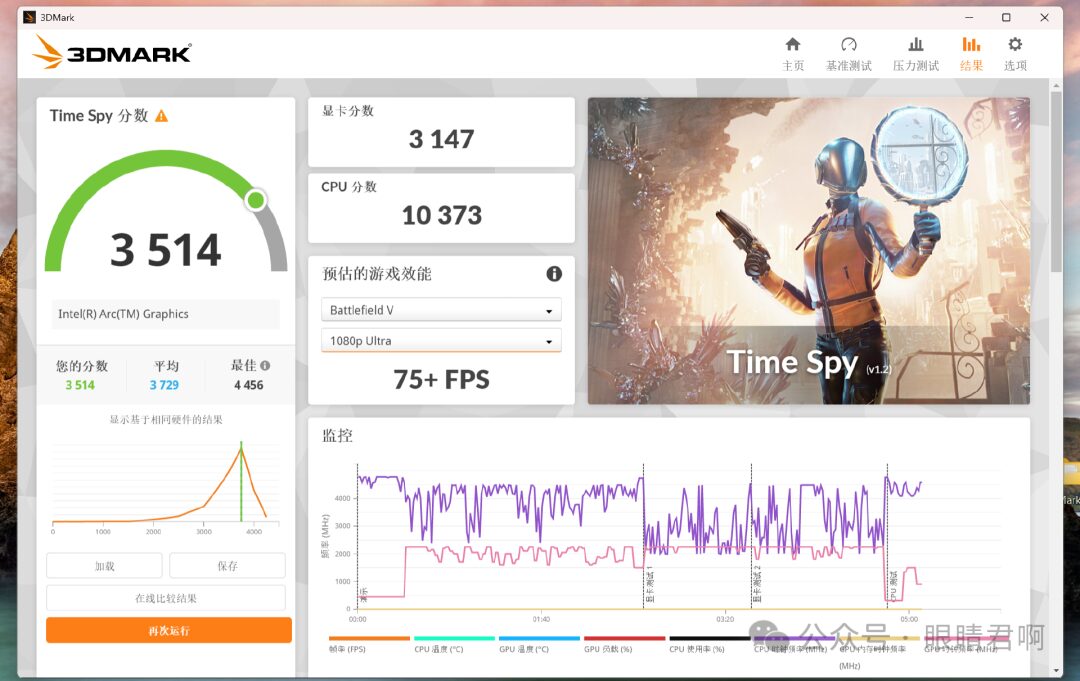
First, the 3DMARK Time Spy test scores a total of 3514, with a graphics score of 3147, which is close to the performance of a GTX 1650 dedicated graphics card.
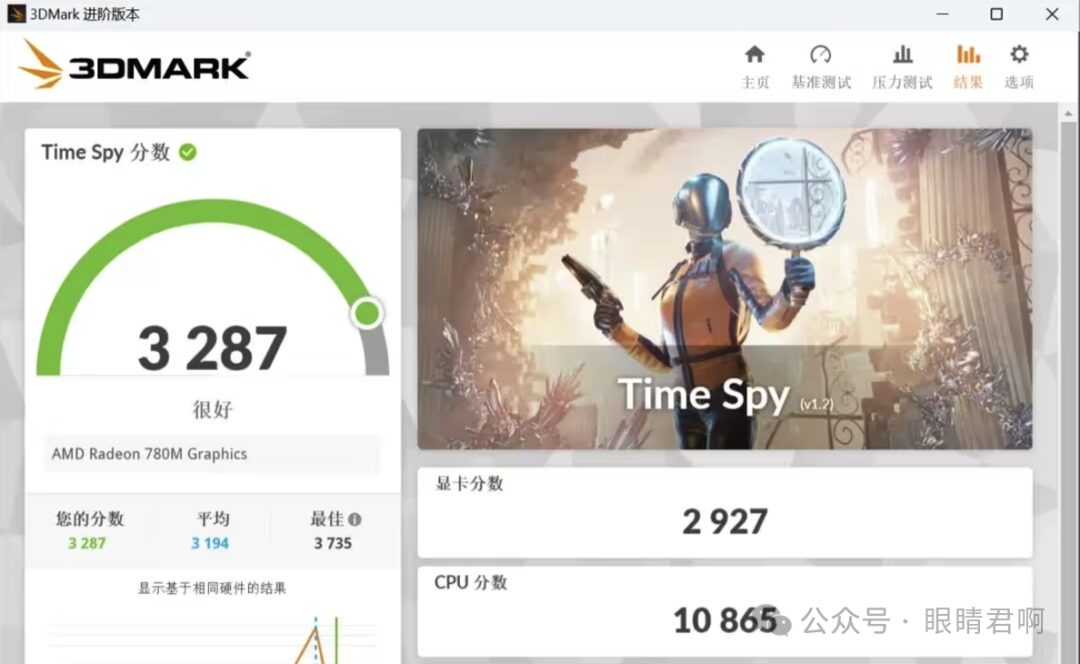
When compared to the AMD Ryzen 7 8845HS Time Spy test, it is evident that the integrated graphics performance of the Asus NUC 14 PRO surpasses that of the Ryzen 7 8845HS’s Radeon 780M.
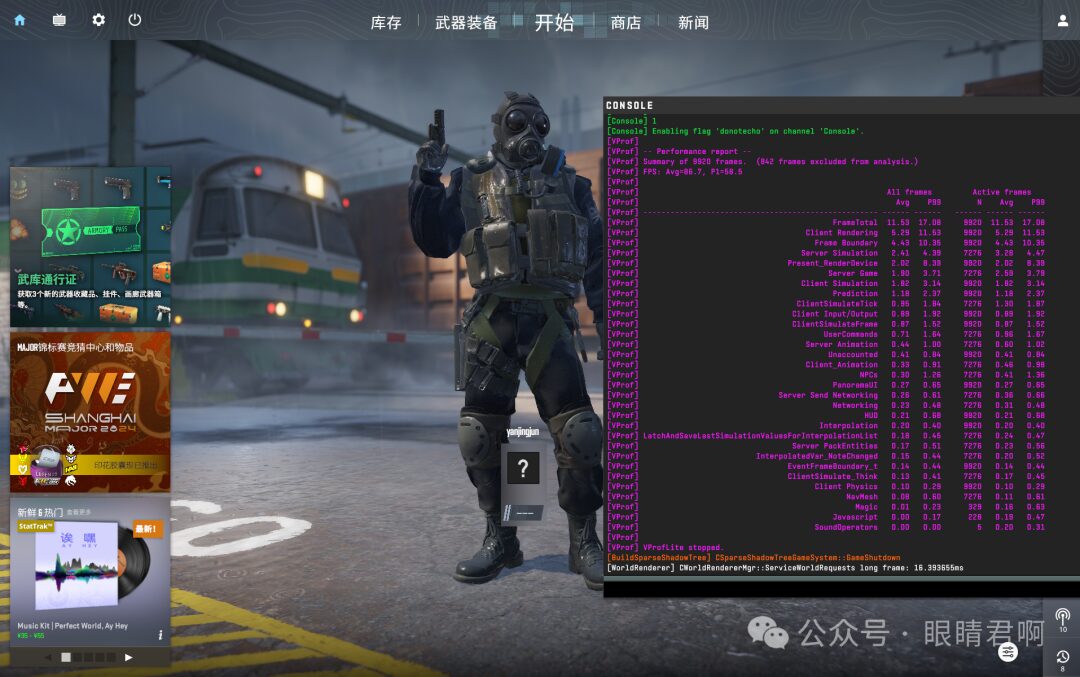
For users with light gaming needs, the performance of the Asus NUC 14 PRO is sufficient for online gaming. I tested the popular CS2 game and found that at a resolution of 1920 x 1200, the average frame rate reached 86.7 frames, making it possible to enjoy a few games during work breaks.
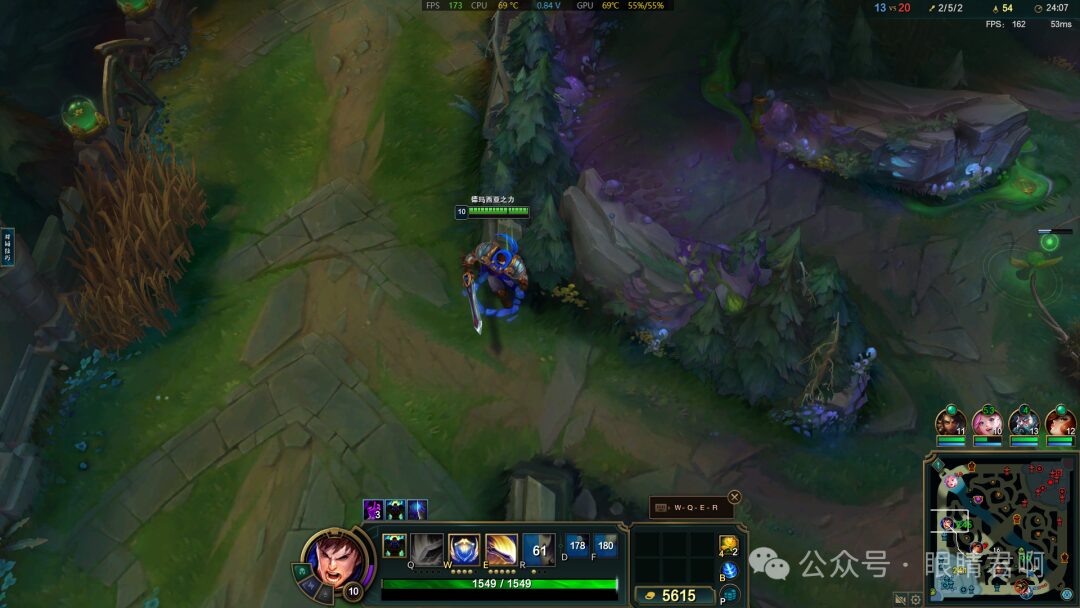
I also tested League of Legends, where the frame rate remained above 160 FPS at 1080P resolution with medium-high settings, and even during intense team fights, it maintained above 100 FPS.
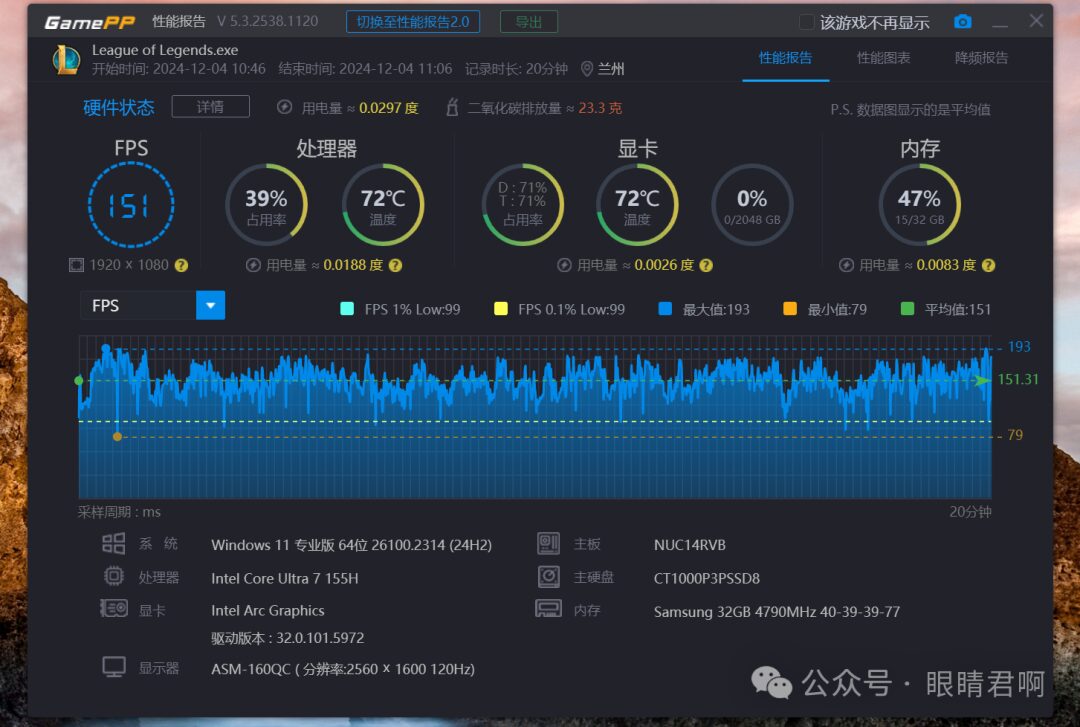
The average FPS recorded by the game statistics tool was 151, with a 0.1% LOW frame rate of 99. During gameplay, the CPU temperature of the Asus NUC 14 PRO reached 72°C, and the cooling system remained quiet even under load, with excellent performance in terms of GPU usage and temperature.
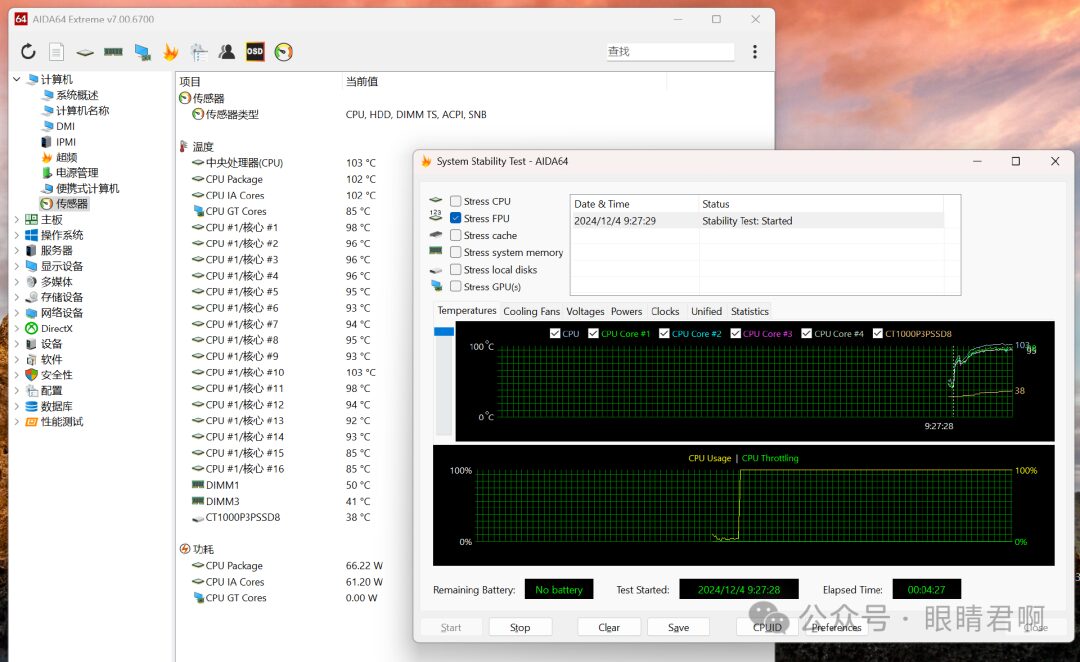
Speaking of cooling performance, under default settings, using AIDA64 to stress test the FPU, the CPU’s maximum power consumption reached 67W, with core temperatures reaching 103°C after 3 minutes. The default fan strategy is somewhat conservative, but under full load, the noise from the cooling fan is noticeable.

The Asus NUC 14 PRO comes with the MyASUS software, which allows users to check the system status and adjust fan modes, offering efficient, standard, and quiet modes. The default mode is standard, while the efficient mode is more aggressive. The quiet mode is very quiet and can be selected based on user needs.
If users prefer not to adjust settings through desktop software, the BIOS settings also allow for fan strategy adjustments.
Conclusion
The Mac mini has become extremely popular recently, but for most computer users, a Wintel mini PC is a more suitable choice for enjoyable work and occasional gaming.
As for my Asus NUC 14 PRO, it is more practical than the Mac mini in terms of interface configuration, memory and storage expandability, and user experience. The powerful performance of the new Intel Ultra 7 155H processor allows it to handle most work scenarios.
Even for gamers, the Thunderbolt 4 interface on the NUC allows for expansion with an external GPU (the Mac mini M4 does not support external GPU expansion). I will also share my gaming experience with the Asus NUC 14 PRO paired with a Thunderbolt dock and an RTX 4070 Super GPU in the future.